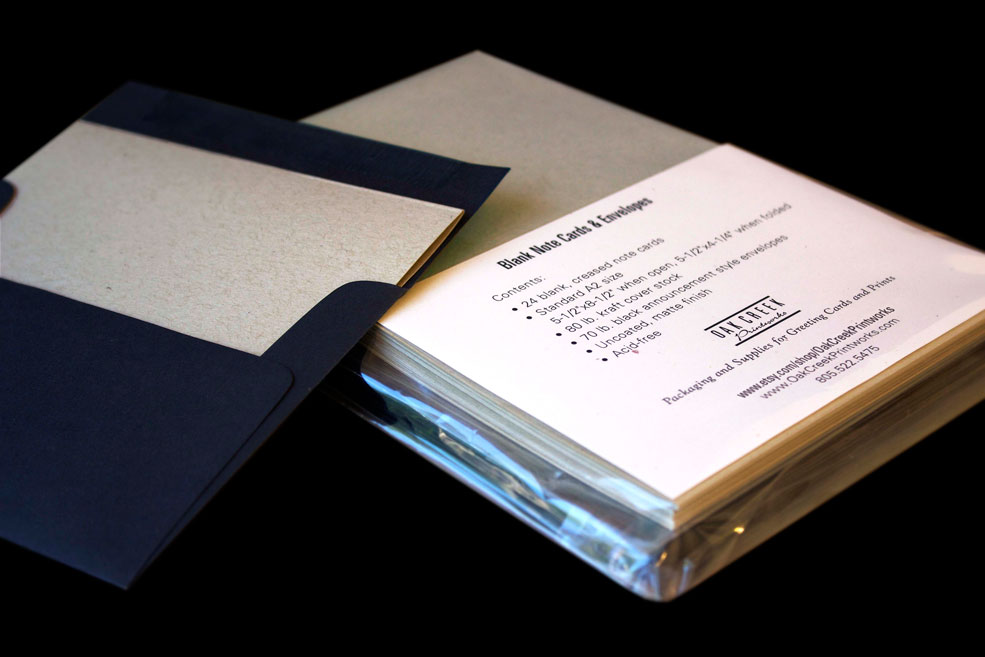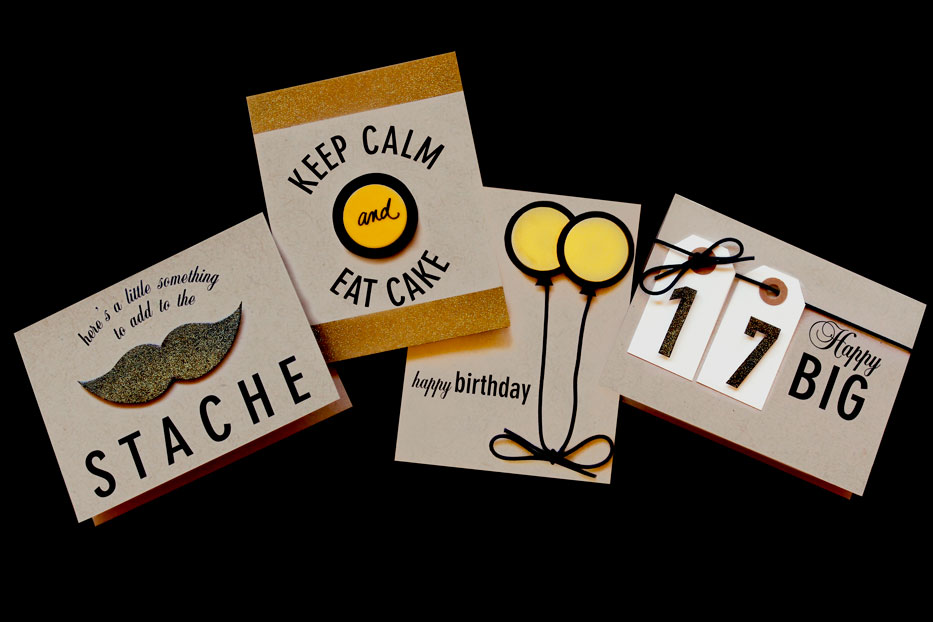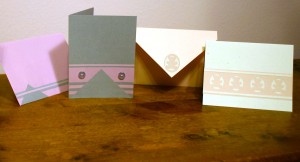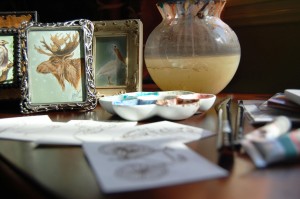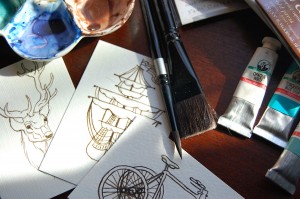On the surface, folding paper appears to be a pretty straightforward subject, but in fact, for artists and crafters who are creating their own note cards, greeting cards and other stationery products, understanding each paper’s specific characteristics can make the difference between an average card and an extraordinary one.
Creating the perfect fold doesn’t really require an understanding of the paper manufacturing process, but it sure does help to explain why folds sometimes go terribly wrong.
In the manufacturing process, paper begins as a mushy soup, which is forced through a fine screen with enough pressure to squeeze the liquid out of the mix. As the fibers of the paper mixture blend and settle into position, they align in a single direction establishing the ‘grain’ of the paper. Chapter 6 in Getting it Printed, by Mark Beach, Steve Shepro, and Ken Russon, is titled ‘Paper and Ink,’ and provides an encyclopedic review of papers’ characteristics and the paper-making process.
Since greeting cards are typically printed on a cover weight paper or a card stock, it is necessary to score the card before folding in order to prevent the paper from cracking. Without scoring, the greeting card may have a bumpy, unsightly fold, even more so if folded against the grain, in which case cracking is likely. The pressure of scoring crushes the paper fibers along the precise path of the fold on the greeting card.
You may also hear scoring referred to as ‘creasing.’ While the tools and equipment that compress the paper fibers may differ, in either case a depression is made on the outside of the greeting card, usually by a 2-3 pt. rounded die or other smooth, hard tool. Some machines pass the paper under a roller to create an debossed depression; others have an arm operated by a lever that pulls a bar down to create the depression. When the bar on the creasing device crushes the paper fibers, a small beaded impression results on the opposite side of the paper. The bead is the result of crushing the fibers in a perfectly straight line, allowing the paper to practically fold itself.

If you are printing your cards at a commercial printer, they know how paper behaves and they will take measures to insure that your cards are properly scored and folded. If you are printing or otherwise creating your own greeting cards, the scoring is up to you.
Do-it-yourselfers have traditionally relied on bone, plastic, or ivory tools to create the line of compressed fibers. When the scoring tool is dragged with pressure along a metal straight edge ruler, the paper fibers are depressed and crushed, creating a raised bead on the opposite side of the paper. This may or may not work well. I consider it a risky method, frequently less than perfect.
The growth in paper crafts, card-making and scrapbook arts has created a demand for improved scoring tools for artists and printers doing very short runs.
Score Boards
Crafters Companion, tested and recommended by the Creative Home Arts Club, is a handy tool for artists, card-makers, or anyone who wants to make clean, smooth folds, whether on handmade cards, envelopes or boxes. The Score Boards combine everything necessary to easily score paper and card stock.
Top Score Multiboard
Create the perfect crease and fold with the Top Score Multiboard, the quintessential tool for do-it-yourselfers crafting handmade note cards, greeting cards and boxes. The double-sided card-making aide provides templates for scoring the crease in the exact position for A2, A7, and A8 (half letter) cards, as well as a number of other folds that can be created from papers cut to various sizes. The Multiboard doubles as an embossing tool, with a variety of lines and shapes from which to choose. The fully illustrated instructions demonstrate the following folds and card ideas:
- basic half fold
- gatefold
- slimline
- square
- concertina
- pop out card
- creating a custom sized box
- triangular boxes
- diamond shaped boxes
- window boxes
- wedge, or cone shaped boxes
The Top Score MultiBoard includes a free embossing tool and complete instructions!
List Price $24.99
Your Price $19.95
The Enveloper
Create dynamic envelopes using virtually any paper in a variety of styles and sizes. Contrasting art papers make great liners for a stunning presentation of your hand made greeting cards. Includes a free embossing tool and complete instructions!
The Enveloper
List Price $24.99
Your Price $19.95
Crafter’s Companion Scoreboards Video DVD
This step-by-step instructional video walks you through a wide variety of techniques for creating professional folds on handmade greeting cards, boxes and envelopes. Use your computer or DVD player on your TV. Over 60 minutes of great ideas and a visual tutorials.
List Price $14.99
Your Price $9.99
Scoreboard Special – 1 Enveloper & 1 Top Score Multi-Board + 1 Free Instructional DVD
By ordering these two award winning tools together you will get the instructional DVD Free; an easy to follow step-by-step video that shows you how to use these tools.
List Price $59.97
Your Price $39.90
